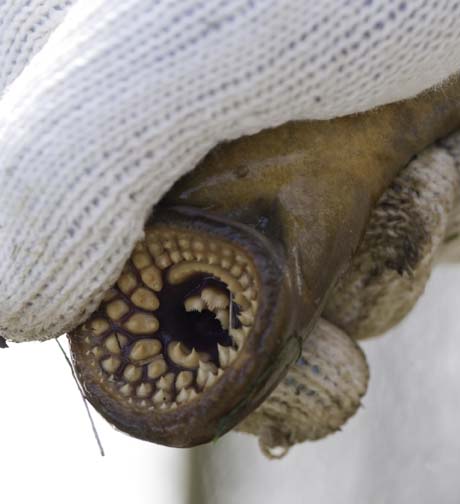Sea lampreys are the source of much angst among wildlife biologists. Are they native to this body of water? How long have they been here and where did they come from? In many locations, including the Great Lakes, sea lampreys are a huge problem that must be dealt with.
Lampricide, in theory at least, kills larval lamprey but doesn’t harm other stream residents. However some other species are sensitive, and there are always those native, non-trouble-making lamprey to worry about. Dams — temporary and permanent — across breeding streams have been tried, too.
The latest weapon in the war against invasive sea lamprey may be the odor of the decaying lampreys themselves.
Research at Michigan State University showed that the “stink” was easily extracted from rotting lampreys in the lab. Lampreys in tanks and swimming in raceways avoided areas that were treated with the dead lamprey extract.
The dead lamprey juice’s most likely use will be to deter lamprey from certain sensitive breeding streams. Or, it may be used to concentrate lamprey into a few streams so that lampricide applications can be more effective.
Field tests will be conducted this summer.
Read the open-access paper in the Canadian Journal of Fisheries and Aquatic Sciences, here.
Read the Michigan State press release here.
Read an article in the Milwaukee Journal-Sentinel here.
Photo by Kurt Stepnitz, courtesy of Michigan State University

